A Tarot exhibition at the warburg institute – PART 2
In my last look at the Tarot Exhibition held at the Warburg Institute I looked at the first three rooms of exhibitions, up to Pamela Colman Smith and Osman Spare.
With this emphasis on esoteric decks from the early 20th Century, it was no surprise that the Third Room was dedicated to the work of Aleister Crowley and his Thoth Deck, as realized by Lady Frieda Harris! This was the second great collaboration between a famous esotericist and a female artist. However, in this case it was the wealthy socialite Harris who both painted and funded the production of the cards (though Crowley paid her a stipend while she worked on them during the Second World War). The exhibition tells us that the almost expressionist nature of the cards explores the link betwen spirituality and science through the use of projective geometry, in order to produce an entirely new effect. Indeed, so dedicated was she to both the work and to Crowley, she moved her studio to be closer while she worked on the deck, and was also named as an executor of his will.
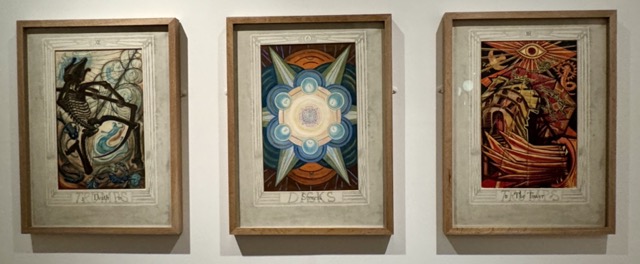
A number of original artworks by her were on display, and above we see the Major Arcana cards of Death and The Tower with the Six of Disks (or ‘Success’) between them. I was also struck by the Hermit card, which I include as I have been comparing it in the various decks.
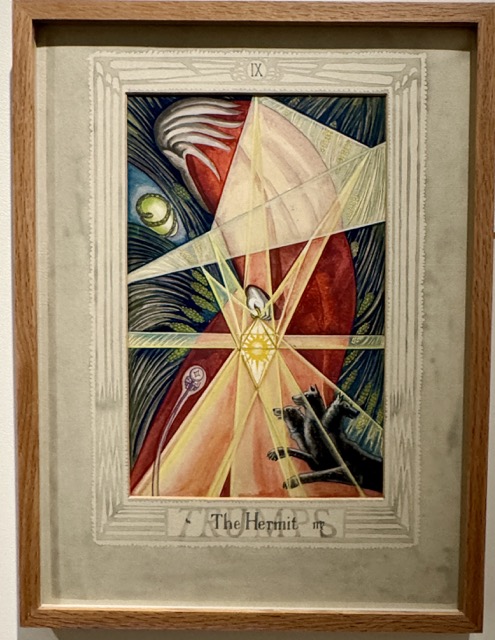
These cards are really a testament to the excellent work done by the Warburg Institute. The original paintings by Lady Frieda Harris were watercolors on paper glued to a thick backing. A report written in 2006 noted that the acidity of the backing (they weren’t concerned with acid-free paper in the late 1930s when the deck was made) had resulted in the borders – and to some extent the paintings – becoming discolored. According to Wikipedia (https://en.wikipedia.org/wiki/Thoth_Tarot) the paintings also required cleaning and the repair of small tears. A conservation plan called for cleaning the surfaces, the removal of the backing (while retaining the original inscriptions), the reuse of the hand-painted window mattes, and the replacement of overlays with acid-free, museum-quality paper. The project was completed by the Institute’s in-house specialist, Susan Campion, in 2011; and the paintings are stored by the Warburg Institute.
In a similar vein to the letter by Pamela Colman Smith to her American ‘sugar daddy’, the exhibition cheekily includes a cartoon which tells us that all was not always smooth sailing between the two. In a book of sketches and cartoons by Harris, one page depicts Crowley as a rather affected frog with what appears to be a Star of David depending from his waist, with the words: “Now Aleister wanted to write a Tarot entirely dictated by Perdurabo.” Behind the words is a fainter sketch of frog-Crowley next to what one assumes to be an image of his alter-ego Perdurabo (his magical – or magickal – motto) along with a cat, presumably his familiar. We might guess form this dig that all was not always a garden of roses! I wonder if she ever showed the sketch to him…
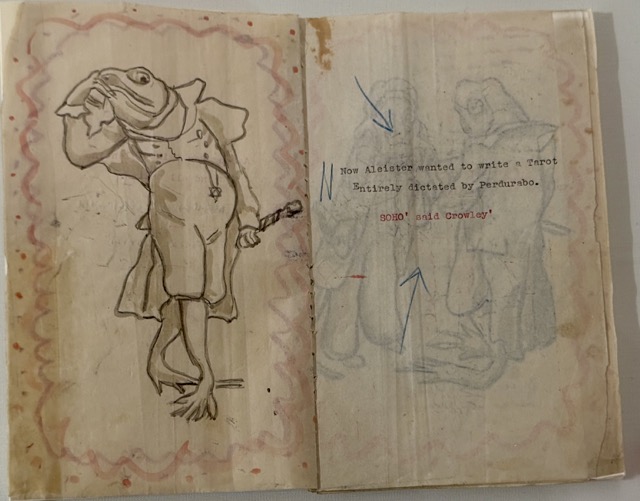
In the Fourth Room, described as Story Machine, we leave behind the history of Tarot as a sign of wealth, a game of cards, a fortune-telling prop and a symbolic method of communicating esoteric ideas, and move on to the card deck as a more direct vehicle of communication. This approach has especially appealed to artists, writers and storytellers who appreciate the use of symbols to convey deeper meanings, and to establish a sympathetic link with the subconscious. The description given mentions a book by Italo Calvino, written in 1973 and called The Castle of Crossed Destinies in which a group of enchanted travellers, who are deprived of speech, can only communicate through Tarot cards. These cards – drawn from the Visconti and Marseille decks – are reproduced alongside the story.
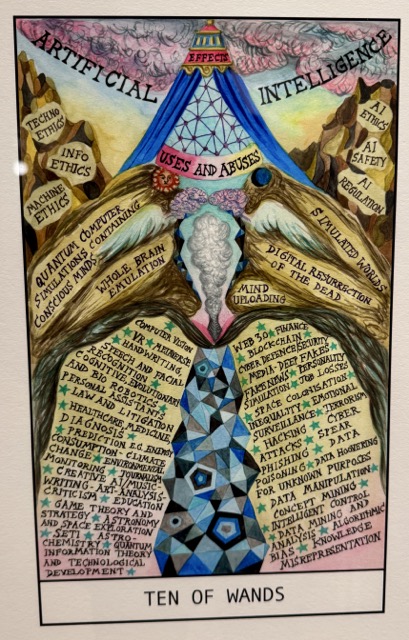

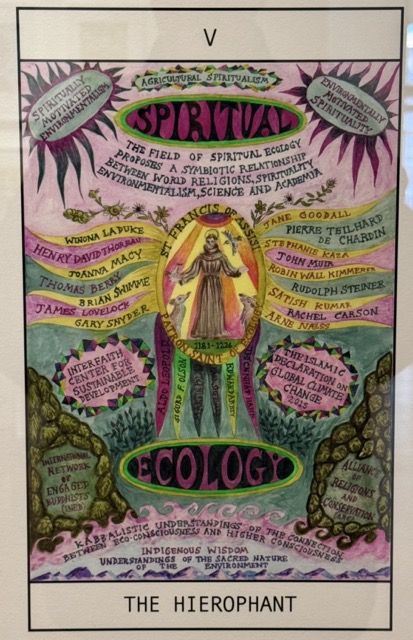
Above we see some cards from British artist Suzanne Treister, who uses Renaissance esoteric symbolism to tell the story of our recent past, focusing on recent global developments in science, communications and governmental forces, thereby providing a tool “to discuss possible ethical solutions for the survival of the human race.” By now the images converge with mind-maps and modern techniques of presenting a wealth of information clearly in a single page.
The Fifth – and final – Room is the Tarotkammer, or Tarot Room. This is an immersive experience in which one enters a small cell-like space all in white, covered with shelves on which contemporary Tarot cards are displayed giving a slightly claustrophobic feel.
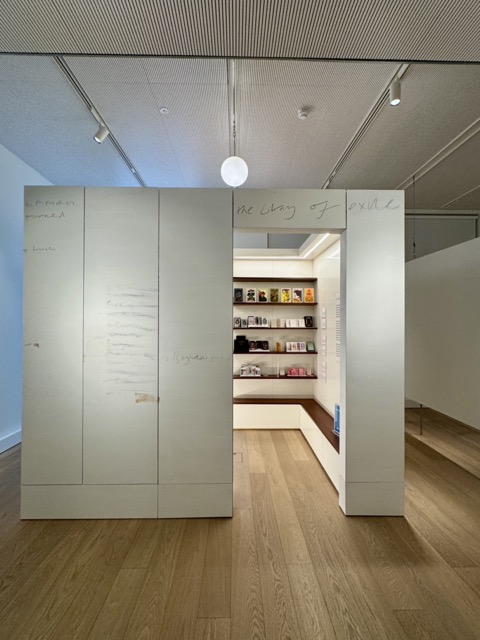
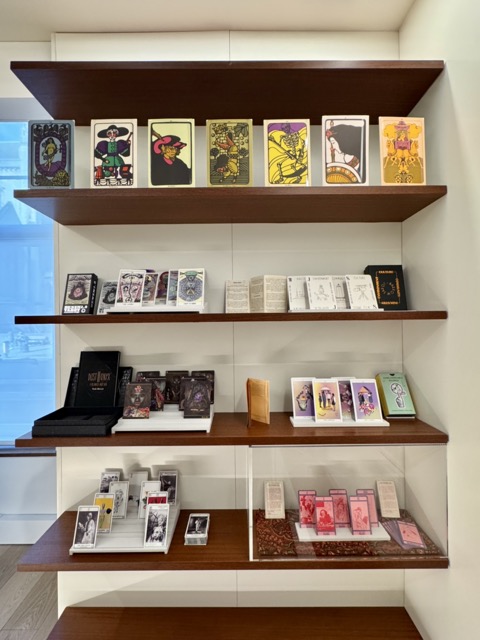
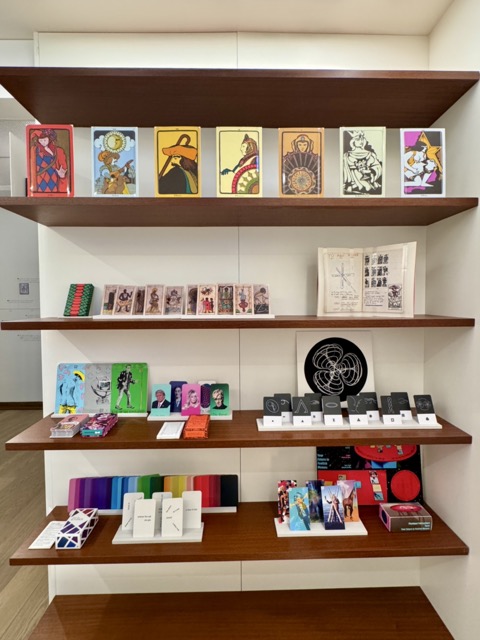
Here we discover the work of contemporary artists who focus on use of Tarot, but now using provocative and sometimes disturbing imagery (although more traditional retro designs are also featured), less as a purely predictive vehicle, and more as a reflection on the role of chance or fortune in human affairs. One is perhaps reminded of Herman Hesse’s The Glass Bead Game, in this reflection of the ludic dimension which harks back to Tarot’s original use, while understanding that, far from being a simple game of chance to win a bet, the wager at stake can perhaps be our very future…

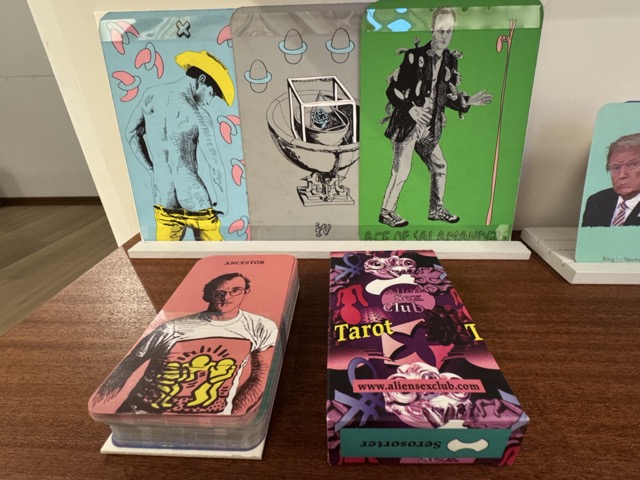
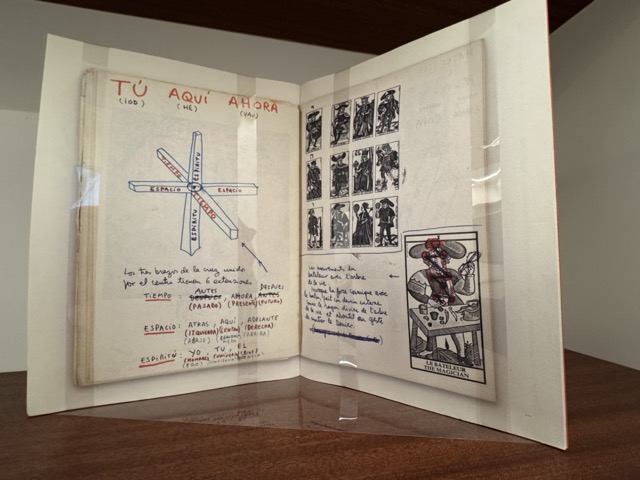
I will end with a book which caught my eye in this Tarokammer – Dune Notebook (1974) by Alejandro Jodorowsky – yes, the avant-garde filmmaker responsible for such extraordinary movies as The Holy Mountain, El Topo and Santa Sangre. I will quote the accompanying explanation in full: ” The diary and notebook of Chilean filmmaker, playwright, composer, writer and occasional actor Alejandro Jodorowsky is titled ‘Dune‘ on its front cover. Presumably notes for a film adaptation of Frank Herbert’s science-fiction novel, the inner contents in fact bear no relation to its plot, instead detailing Jodorowsky’s personal thoughts on the history of the Tarot de Marseille and the mental states induced by its images. The notebook is an illustrated example of the director’s deep commitment to ‘psychomagic’, a healing technique combining Eastern mystical philosophies with Western psychotherapy. Jodorowsky has said, ‘Art is not art if it is incapable of healing.’

All-in-all, the exhibition was an impressive path through the history and development of the Tarot. I am sure many will bemoan the absence of their personal favorites, and the omission of some of the uses made of the deck over the centuries. But as Jonathan Allen, one of the curators, said to me, striking the balance between telling the story and making the exhibition dynamic and relevant was a challenge for the Institute: but he hoped that they had struck a fair balance which would appeal the most people.
I think they most certainly lived up to their hopes!
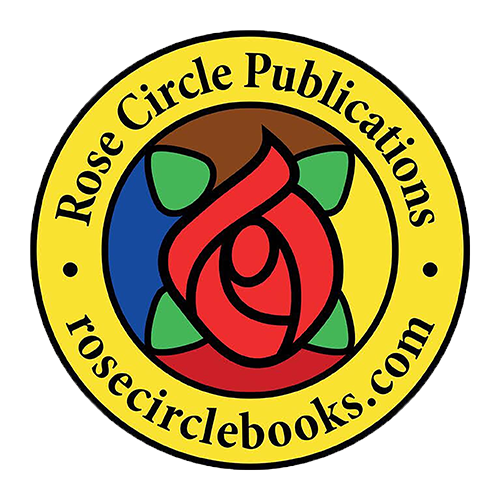
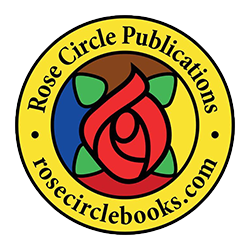
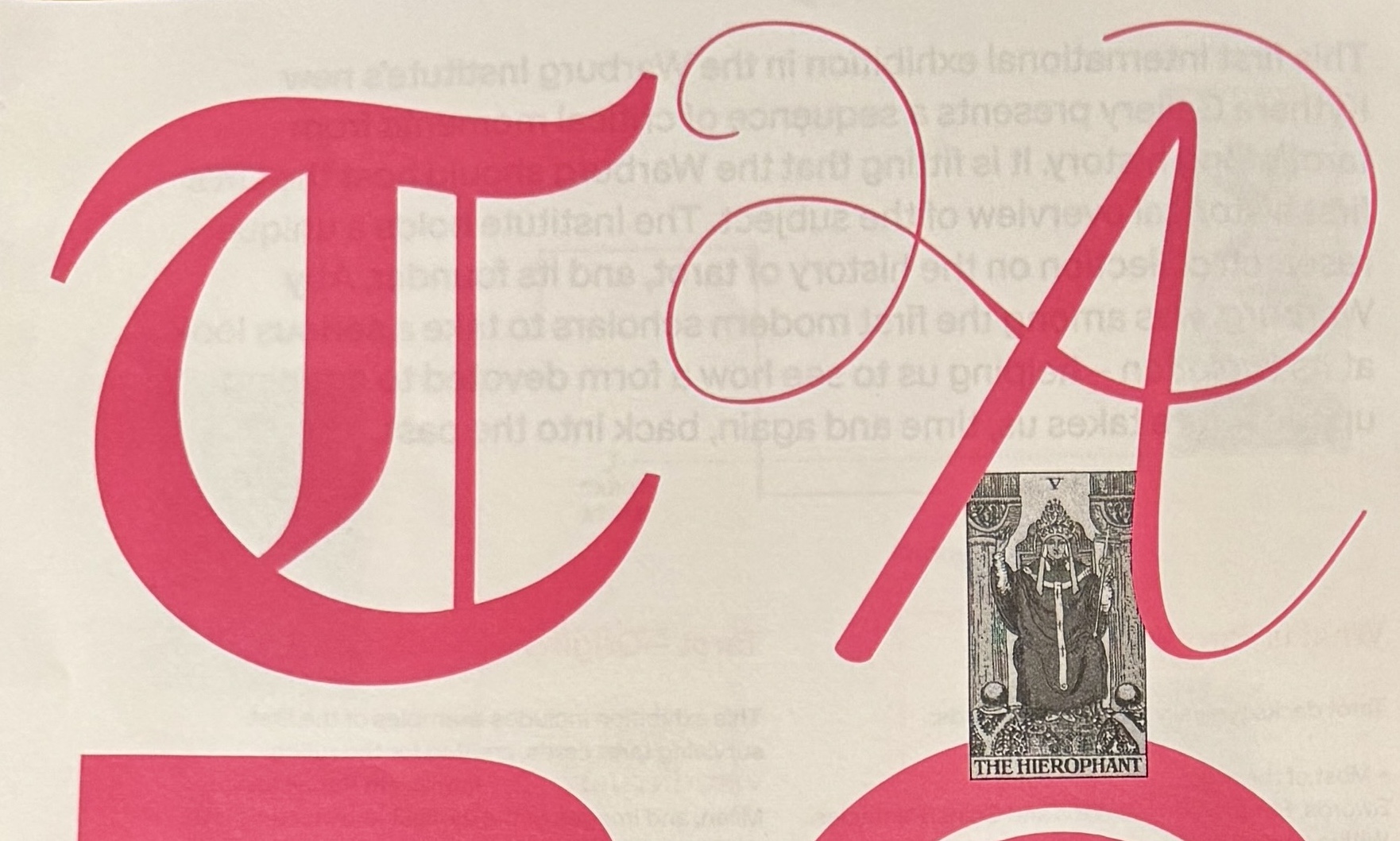
No Comments